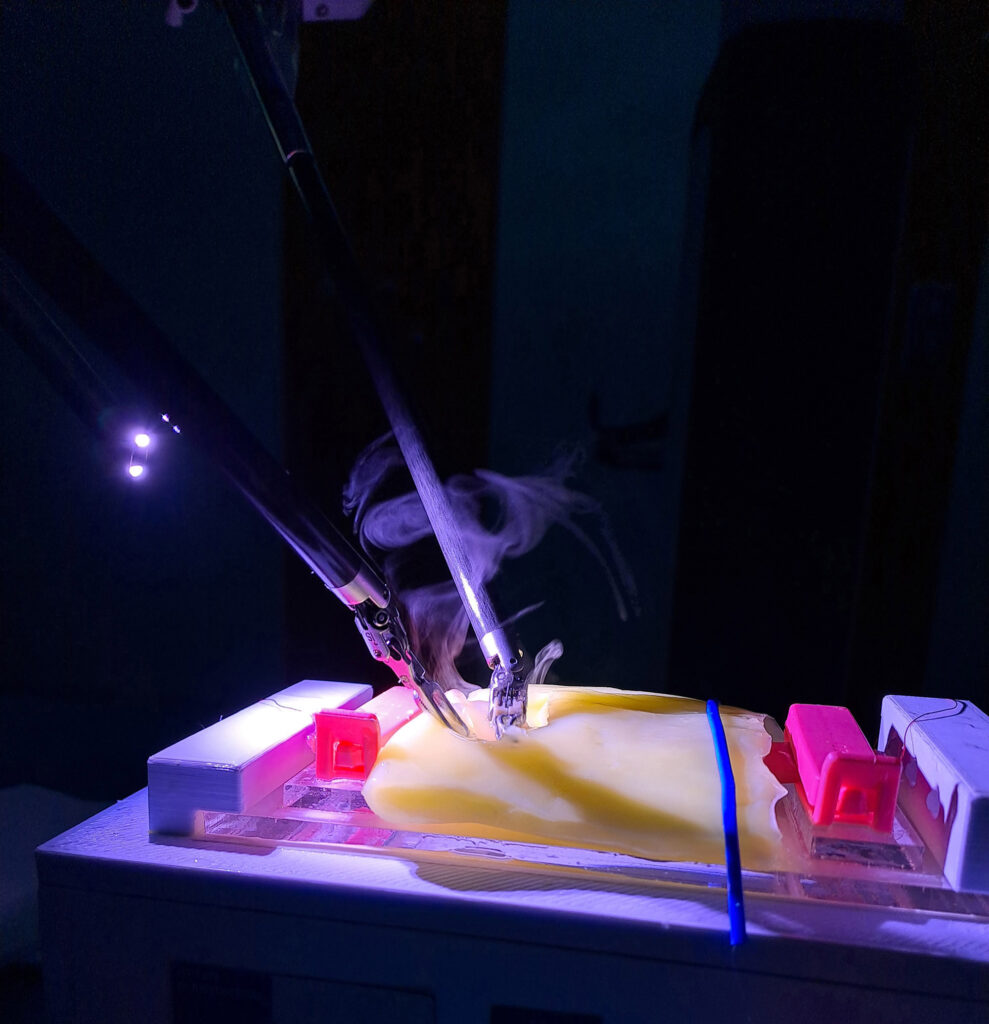The primary scientific challenge addressed in the Surgical Robotics and Allied Technologies Area involves bridging the gap between diagnosis and therapy. This is accomplished by seamlessly blending expertise from robotics and bioengineering and developing platforms, enabling technologies, and components capable of treating various pathologies within the body. These solutions can be designed at different scales, enabling interventions in hard-to-reach areas, such as the cardiovascular system, respiratory apparatus, central nervous system, as well as abdominal cavities. The vision extends to treating chronic diseases and physical disabilities through a bio-mechatronic approach, forming an integral part of the broader perspective on targeted therapy. Moreover, the Area focuses on enhancing the training of healthcare professionals through advanced simulators.
The Area hosts the Medical Microrobotics Lab which delves into the world of small-scale robotics by focusing on advancing non invasive medical treatment and advanced diagnosis. The Area is also involved in the REPAIR Lab, promoted by the National Institute for Insurance against Accidents at Work – INAIL Prosthetic Center in Budrio, Italy, and in a Joint Lab for the training of healthcare operators in neonatal applications by mechatronic solutions.
More specifically, the Area is exploring the following research themes of the BioRobotics Institute:

This research line encompasses projects dedicated to the development of robots, capsules, instrumented catheters, probes, and other advanced medical instruments designed to operate and navigate within the body for diagnostic and therapeutic applications. The scope of therapy and diagnosis extends to various body regions such as the abdomen, cardiovascular system, gastrointestinal tract, and other hard-to-reach districts, utilizing robotic solutions with sizes ranging between 10 cm and tens of microns. Additionally, this research line involves the utilization of simulators for high-tech training of healthcare professionals.
Differently from traditional robotics, bioinspired soft robotics seeks to explore natural mechanisms, drawing inspiration from biological features to implement them in artificial agents. This approach faces the challenges of building robots using soft and deformable materials, ensuring their capability to interact effectively and safely with living beings and the environment. Our current research on enabling technologies encompasses soft sensors and actuators, flexible and deformable components, as well as variable stiffness materials and mechanisms tailored for diverse application-oriented robotic solutions.


This research line is dedicated to the development of robotic systems aimed at supporting or replacing impaired or compromised body functionalities. The exploration includes the design of implantable devices, such as biorobotic organs capable of restoring lost functions like blood pumping or micturition, and physical human-machine interfaces that can self-adapt to body physiological changes over time, enhancing comfort and stability in wearable devices, such as smart prosthetic sockets for limb prostheses. The research also extends to the development of high-fidelity physical simulators for reproducing physiological and pathological phenomena.